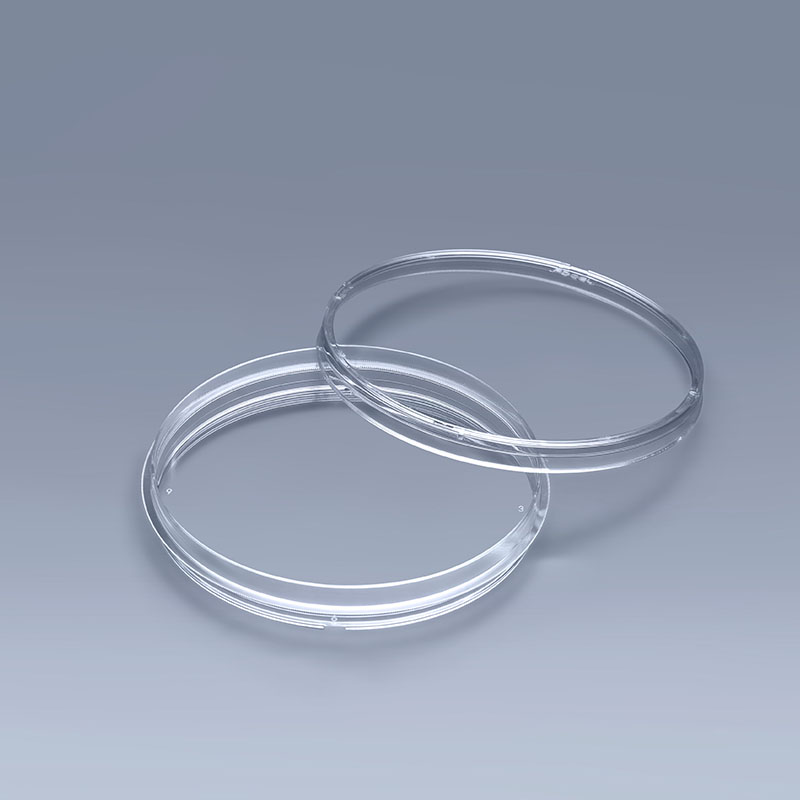Cell culture dishes are essential tools in biological laboratories, with their design and quality directly impacting the effectiveness of cell culture and the accuracy of experimental results. Far from being mere containers, they are carefully designed and crafted to meet the diverse needs of researchers involved in cell culture.
1. Material and Design:
High-quality cell culture dishes are typically made from polystyrene (PS), a material known for its excellent transparency and chemical stability. This ensures optimal observation and control of cells during the culture process. Additionally, the serrated ring design on the sides of the dish not only facilitates easy handling but also minimizes the risk of contamination.
2. Surface Treatment:
The surface of high-quality cell culture dishes is often treated with Tissue Culture (TC) technology, which enhances cell adhesion. This treatment improves the ability of cells to attach and grow, thereby increasing cell viability and proliferation rates, effectively meeting the demands of cell culture.

3. Precision and Stability:
The manufacturing process of premium cell culture dishes ensures that they are crystal clear, uniformly thick, with a flat and smooth dish bottom free from distortion. This design allows cells to receive consistent nutrition and growth conditions throughout the culture process, making quantitative analyses more accurate and reliable.
4. Convenience and Safety:
The lids of cell culture dishes are usually designed with circular protrusions that fit snugly with the base, making storage easier and reducing the evaporation of the culture medium. This feature helps maintain a stable culture environment, enhancing the convenience of experimental operations and reducing the likelihood of variations during cell culture.
Conclusion:
In the laboratory, high-quality cell culture dishes play a crucial role. They not only provide an ideal environment for cell growth but also ensure the accuracy and reproducibility of experimental results. This reliability and precision make them indispensable tools in life sciences research and medical applications, offering greater convenience and potential for scientific advancement.
The FAI climbed 5.9 percent year-on-year in the first 11 months of 2018, quickening from the 5.7-percent growth in Jan-Oct, the National Bureau of Statistics (NBS) said Friday in an online statement.
The key indicator of investment, dubbed a major growth driver, hit the bottom in August and has since started to rebound steadily.
In the face of emerging economic challenges home and abroad, China has stepped up efforts to stabilize investment, in particular rolling out measures to motivate private investors and channel funds into infrastructure.
Friday's data showed private investment, accounting for more than 60 percent of the total FAI, expanded by a brisk 8.7 percent.
NBS spokesperson Mao Shengyong said funds into weak economic links registered rapid increases as investment in environmental protection and agriculture jumped 42 percent and 12.5 percent respectively, much faster than the average.
In breakdown, investment in high-tech and equipment manufacturing remained vigorous with 16.1-percent and 11.6-percent increases respectively in the first 11 months. Infrastructure investment gained 3.7 percent, staying flat. Investment in property development rose 9.7 percent, also unchanged.
 English
English


















































